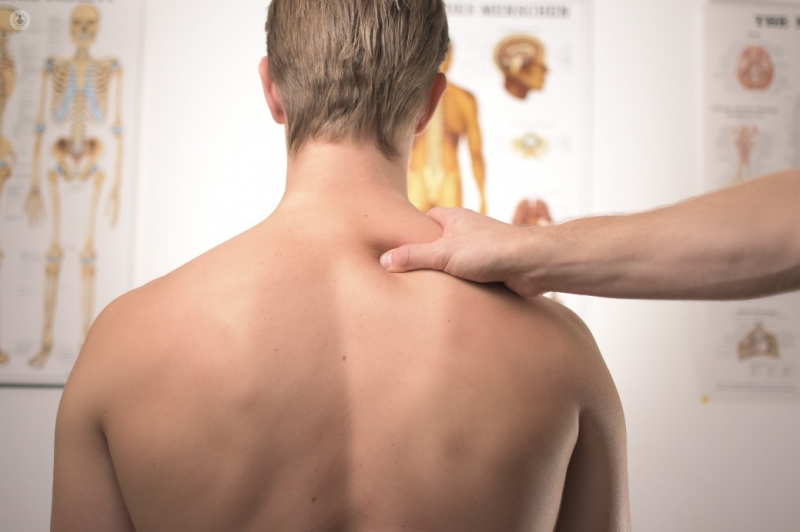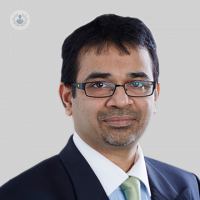Spinal cord stimulation: how does it work?
Escrito por:Dealing with chronic (long-term) pain isn’t easy. While there are many different pain medications available to keep it under control, in some cases nothing seems to work. This is all the worse if the pain is severe. What else can be done? One option is a spinal cord stimulator – a device that interacts directly with the nervous system to block pain. Leading neurosurgeon Mr Girish Vajramani explains.

What is a spinal cord stimulator and how does it work?
A spinal cord stimulator is a device that is implanted to control chronic pain. It is conceptually similar to a TENS (transcutaneous electrical nerve stimulation) machine but involves implanting electrodes within the spine. It works by blocking the pain signals reaching the brain via the gate mechanism. The surgery is done in two stages:
- Stage 1: trial – this involves placing electrodes in the spine and connecting it to an external battery. The trial period is usually 1-2 weeks and if there is greater than 50% reduction in pain, the trial is deemed a success.
- Stage 2: this involves implanting the pulse generator or battery. The battery is most commonly a rechargeable battery, but non-rechargeable ones are available as well.
Which pain conditions can it treat?
The spinal cord stimulator is a NICE- and NHS England-approved treatment for chronic neuropathic pain. Typically, patients may have chronic neuropathic pain from, for example:
- Failed back surgery syndrome
- Complex regional pain syndrome
- Failed neck surgery syndrome
- Post-operative chronic pain
- Focal neuropathic pain
It’s generally recommended that a spinal cord stimulator be considered once pain medications have been optimised. The assessment is generally done in a multi-disciplinary setting, often also ensuring that the psychological profile is taken into consideration.
Who is eligible to have the spinal cord stimulator fitted?
Any patient with severe chronic neuropathic pain who has tried various types of pain medication (which have not resolved the problem) and does not have significant psychological distress are suitable candidates for a spinal cord stimulator.
What is the success rate?
The success rate with the current devices is generally very high, in the order of 60-80%. Once fitted, patients will have to attend follow-up clinics for programming the stimulator and finding the optimal setting. The surgical procedure is extremely safe but does carry 1-2% risk of infection, bleeding, neurological deficits, spinal fluid leakage, and lead migration (where the electrode lead moves out of position).
Is the spinal cord stimulator for life? How does it work with battery life?
A non-rechargeable battery lasts 3-5 years and would need an operation to replace the battery when depleted. A rechargeable battery generally lasts 15-20 years.
What other types of devices are available?
Currently, there are several types of spinal cord stimulator available and the technology has advanced significantly in the last 5-6 years. The different types of devices include:
- Conventional low-frequency stimulators
- High-frequency stimulators
- Burst stimulators
- Dorsal root ganglion stimulators
- Stimulators with wireless external batteries
- Closed-loop stimulators
- Peripheral nerve stimulators.
Can the patient feel the stimulator when it’s fitted?
Depending on the types of stimulators, patients may or may not feel the stimulation. With conventional low-frequency stimulation, patients will get a buzzing sensation in the affected area, which will mask the pain. With high-frequency and burst stimulation, patients will not get any added buzzing sensation.
Visit Mr Vajramani’s Top Doctors profile to book an appointment.


